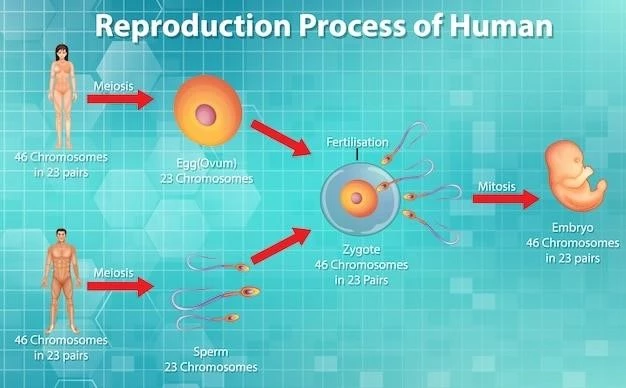Disease Overview
The Omphalocele exstrophy imperforate anus spinal defects (OEIS) complex is a severe birth defect consisting of multiple anomalies․
Definition of OEIS Complex
The OEIS complex, short for Omphalocele exstrophy imperforate anus spinal defects complex, is a severe congenital condition characterized by a combination of abdominal wall defects, urogenital anomalies, and spinal abnormalities․ This rare syndrome involves the protrusion of abdominal organs, an open bladder, anal atresia, and defects in the spinal column․
Introduction
The Omphalocele exstrophy imperforate anus spinal defects (OEIS) complex, a severe congenital anomaly, involves multiple structural malformations․ This condition requires comprehensive multidisciplinary management for optimal outcomes․
Historical Background of OEIS Complex
The term OEIS complex was first coined by Carey et al․ in 1978, describing a condition that includes omphalocele, exstrophy of cloaca, imperforate anus, and spinal defects․ This complex presents significant challenges in management due to its multifactorial etiology and varied associated anomalies․
Etiology of OEIS Complex
The exact etiology of the OEIS complex, which includes omphalocele, exstrophy of cloaca, imperforate anus, and spinal defects, remains largely unknown․ It is believed to be multifactorial, possibly involving genetic predisposition, environmental factors, and developmental anomalies during various stages of gestation․ Although sporadic, some cases have been associated with twin pregnancies and in vitro fertilization, indicating a complex interplay of factors contributing to the manifestation of this severe congenital condition․
Imperforate Anus
Imperforate anus, also known as anal atresia, is a congenital abnormality where the normal anal opening is missing at birth․ This condition presents a spectrum of defects varying in complexity, from minor membrane coverings to extensive cloacal malformations affecting the urinary and genital tracts․
Description and Classification
Imperforate anus, a congenital condition also known as anal atresia, presents a spectrum of defects ranging from minor membrane coverings to complex cloacal malformations affecting the urinary and genital tracts, classified based on the severity of the malformation and associated anomalies․ The management of imperforate anus requires a multidisciplinary approach involving various medical specialties for optimal outcomes․
Prognosis and Associated Malformations
The prognosis of imperforate anus varies based on the severity of the malformation and associated anomalies․ Patients require individualized treatment approaches, typically involving a combination of surgical interventions and multidisciplinary care to address associated genitourinary, spine, and other structural defects․ Close monitoring, early intervention, and long-term management are essential to improve outcomes and quality of life for individuals with imperforate anus․
Omphalocele
Omphalocele, characterized by the intestines, liver, or other organs positioned outside of the abdominal cavity due to a deficit in abdominal wall muscle development, necessitates specialized care and interventions for management․
Characteristics of Omphalocele
Omphalocele, a congenital condition involving the protrusion of abdominal organs outside the abdomen, typically presents with intestines, liver, or other organs located outside the abdominal cavity due to a deficiency in abdominal wall muscle development․ This anomaly requires specialized care for the management of associated structural defects, necessitating close monitoring and multidisciplinary interventions for optimal outcomes in affected individuals․
Surgical Management and Complications
Surgical repair of omphalocele involves a series of complex procedures performed by a multidisciplinary team consisting of neonatologists, pediatric surgeons, urologists, orthopedists, neurosurgeons, geneticists, and endocrinologists․ The surgical approach may include multiple interventions at different stages of life to address the structural defects present․ Complications associated with surgical repair can range from urogenital and gastrointestinal dysfunction to neurological issues and psychological consequences․ Prognosis depends on the severity of the defects and the collective experience of the healthcare team managing the patient․

Cloacal Exstrophy
Cloacal Exstrophy, part of the OEIS complex, is a severe birth defect involving urinary, digestive, and reproductive systems, often requiring staged corrective surgeries․
Features of Cloacal Exstrophy
Cloacal exstrophy, a component of the OEIS complex, presents with severe birth defects affecting the urinary, digestive, and reproductive systems․ This condition typically involves the presence of the bladder and other organs outside the abdomen, along with divided genitals and incomplete anal development․ Staged corrective surgeries are often necessary to address the complex anatomical abnormalities associated with cloacal exstrophy․
Diagnostic Procedures and Treatment Approaches
Diagnostic evaluation of Cloacal Exstrophy typically involves a comprehensive physical examination, imaging studies such as ultrasonography, magnetic resonance imaging (MRI), and genetic testing to assess the extent of the malformations and associated anomalies․ Treatment approaches for Cloacal Exstrophy often require staged corrective surgeries performed by a multidisciplinary team, including pediatric surgeons, urologists, orthopedists, neurosurgeons, and geneticists, to address the complex structural abnormalities and optimize long-term outcomes for the individual․
Clinical Presentation
Cloacal Exstrophy is a severe birth defect with urinary, digestive, and reproductive system involvement, often necessitating staged corrective surgeries for comprehensive management․
Neonatal Presentation of OEIS Complex
Neonates with the OEIS complex present with characteristic anatomical features, including omphalocele, cloacal exstrophy, imperforate anus, and spinal defects․ This complex condition requires immediate medical attention and a well-coordinated multidisciplinary team for comprehensive evaluation and management․
Multidisciplinary Team Approach in Diagnosis and Management
The diagnosis and management of the OEIS complex necessitate a multidisciplinary team comprising neonatologists, pediatric surgeons, pediatric urologists, orthopedists, neurosurgeons, geneticists, and endocrinologists․ This collaborative approach ensures a comprehensive evaluation, personalized treatment plan, and long-term care for individuals affected by this complex condition․ The involvement of various specialties allows for tailored interventions that address the diverse structural anomalies associated with the OEIS complex, optimizing patient outcomes and improving quality of life․
Urological Management
Urological management of the OEIS complex requires a comprehensive approach involving a multidisciplinary team of specialists for tailored care and optimal outcomes․
Review of Urological Interventions in OEIS Complex Patients
The management of urological aspects within the OEIS complex involves a thorough review of patients, including diagnostic evaluations and personalized treatment strategies to address the structural and functional challenges associated with urogenital anomalies․ Surgical interventions play a key role in optimizing outcomes and quality of life for individuals affected by the OEIS complex․
Cloacal exstrophy, a severe birth defect within the OEIS complex, often involves malformations in the spinal region requiring specialized care and tailored interventions․
Spinal Defects
Cloacal exstrophy, a severe birth defect within the OEIS complex, often involves malformations in the spinal region requiring specialized care and tailored interventions․
Genetic and Environmental Factors
The etiology of the OEIS complex, encompassing omphalocele, exstrophy of cloaca, imperforate anus, and spinal defects, involves an intricate interplay of genetic predisposition, possibly influenced by environmental factors, during various developmental stages․ Despite its sporadic nature, studies suggest multifactorial origins, including potential associations with twin pregnancies and in vitro fertilization․
Role of Genetic and Environmental Influences in OEIS Complex
The OEIS complex, characterized by omphalocele, exstrophy of cloaca, imperforate anus, and spinal defects, is believed to have multifactorial origins influenced by genetic predisposition and environmental factors․ While the exact etiology remains unclear, the intricate interplay of genetic and environmental influences during critical developmental stages likely contributes to the manifestation of this severe congenital condition․ Studies suggest potential associations with twin pregnancies, in vitro fertilization, and diverse environmental exposures in the pathogenesis of the OEIS complex․
Prenatal Diagnosis
Information on prenatal diagnosis strategies and approaches for Omphalocele exstrophy imperforate anus complex requires tailored care for optimal outcomes․
Challenges and Advances in Prenatal Detection of OEIS Complex
Prenatal detection of the OEIS complex, which includes omphalocele, exstrophy of cloaca, imperforate anus, and spinal defects, presents significant challenges due to the diverse nature of anomalies involved․ Advances in fetal ultrasound imaging techniques, such as high-resolution ultrasonography and fetal magnetic resonance imaging (MRI), have improved the ability to identify structural abnormalities earlier in gestation, allowing for timely intervention planning and enhanced prenatal counseling for families affected by this complex condition․
Surgical Repair and Outcomes
Patients with OEIS complex often require multiple complex reconstructive surgeries performed by a multidisciplinary team․ Surgical management aims to address the varied structural defects, including genitourinary, gastrointestinal, and neurological issues, to improve outcomes and enhance the quality of life for individuals with this condition․
A male patient, 10 years old, with OEIS complex underwent surgical repair and multidisciplinary care involving neonatologists, pediatric surgeons, urologists, orthopedists, neurosurgeons, geneticists, and endocrinologists․ The patient was delivered via cesarean due to twin presentation and showed stable vital signs․ The management included addressing the various structural defects associated with the condition, such as omphalocele, exstrophy of cloaca, imperforate anus, and spinal abnormalities, through a series of surgeries and interventions by a specialized team․

Case Study and Management
A 10-year-old male patient with OEIS complex underwent surgical repair involving a multidisciplinary team for his omphalocele٫ cloacal exstrophy٫ imperforate anus٫ and spinal defects․ The patient required staged surgeries and comprehensive care to address the complex structural abnormalities associated with the condition․
Clinical Case Study of a Patient with OEIS Complex
A 10-year-old male patient with the OEIS complex underwent surgical repair involving a multidisciplinary team for his omphalocele, cloacal exstrophy, imperforate anus, and spinal defects․ The patient required staged surgeries and comprehensive care to address the complex structural abnormalities associated with the condition․
